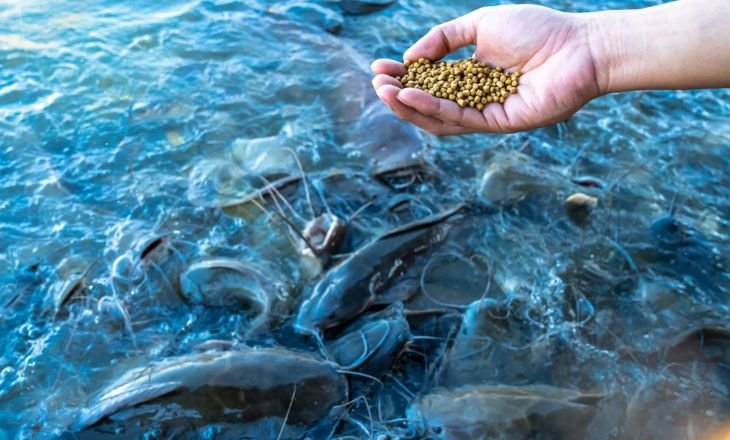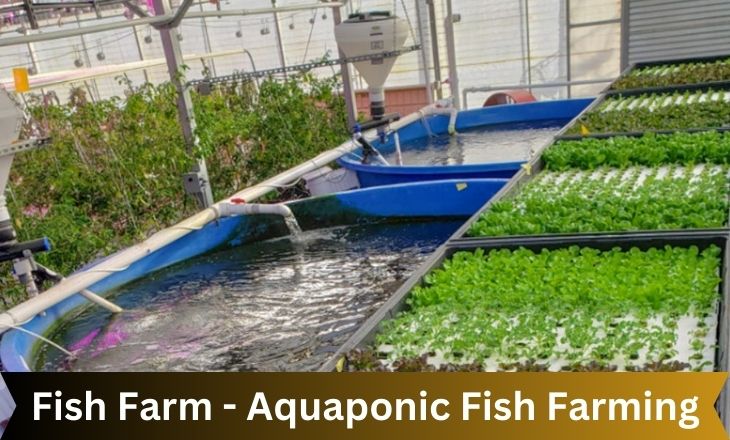Aquaponic Fish Farm is a modern way of farming that helps fish and plants thrive together. This method produces fresh, organic food in a sustainable way, with little harm to the environment.
It is revolutionizing food production, benefiting both farmers and consumers. Let’s learn more about this innovative farming technique and how it shapes the future of food.
Fish Farm
Fish farming, called aquaculture, is a growing industry that meets the demand for seafood. Farms use technology and sustainable methods to produce high-quality fish without harming wild populations.
Fish farms provide a good environment for fish to grow quickly and stay healthy, reducing pressure on natural habitats. They also offer seafood choices not typically found in oceans or rivers.
Fish farming can change how we produce and consume seafood, promoting a more environmentally friendly way to meet global food needs.
Cage System
The cage system, or the floating net pen system, is a common way to raise fish in natural water. Large net-covered cages hold and protect the fish in lakes or oceans. This system helps reduce environmental harm by managing waste and avoiding contact with wild fish.
It can work for different types of fish, like salmon and tilapia. The cage system also makes it easy to watch over the fish and feed and harvest them, which is useful for commercial fish farming.
Open Net Pen System
The open net pen system revolutionized fish farming by making it cheaper to raise many fish. Some people say this system pollutes water and spreads diseases. However, many farmers think the system can be sustainable and eco-friendly with good management and new technology.
One solution to the problems of open-net pens is using remote monitoring systems. These systems help farmers monitor water quality and make informed feeding and disease control decisions.
What Is Farmed Fish
Some farmed fish are safe for the environment and just as good as wild-caught fish. Sustainable fish farming helps protect the environment and ensures a steady, safe seafood supply.
Farmers can control farmed fish production and address problems like overfishing and habitat destruction. New technology allows farmers to improve feeding, manage waste, and prevent diseases in fish farms. This keeps the fish healthy and meets the demand for seafood without harming nature.
Introduction To Aquaculture Management
Successful fish farming requires balancing ecology and economics. Monitoring water quality, controlling diseases, and optimizing feed efficiency is important. Sustainable practices like promoting biodiversity and ensuring animal welfare are becoming more important.
Technology, such as sensors and AI, can help farmers make better decisions. Embracing innovation and best practices is crucial for the long-term success of fish farming.

Feed Management
Managing the fish feed on a farm is important for the fish to grow well and stay healthy. It involves tracking when and how much the fish are fed and ensuring the feed is of good quality.
By managing the feed carefully, farmers can help the fish grow faster, reduce waste, and earn more money. It’s also important to consider the dietary needs of different types of fish at various growth stages.
This helps farmers provide the right food for healthy and optimal growth. Technology like automatic feeding systems can simplify feeding and ensure the fish are fed consistently. Good feed management is essential for the success of fish farms.
Inventory Monitoring
Fish farms are growing, so it’s important to keep track of inventory. This means knowing how many fish there are and how healthy they are. Modern inventory systems can change how fish farms work by giving instant information on fish numbers, feeding times, and water quality.
Old-fashioned ways of keeping records and counting fish by hand are no longer needed. Technology like RFID tags and sensors can make managing inventory easier.
Population Tracking
Watching population trends is similar to observing a fish farm. As fish numbers fluctuate, human populations also change due to various factors. Monitoring population data reveals how society evolves, like observing a living ecosystem where demographic patterns indicate society’s well-being.
By closely monitoring population data, we can understand migration, fertility, and age demographics that influence our communities. This information guides decision-making and provides insight into society’s future direction, akin to forecasting fish stock growth in a well-managed fish farm.
Calculating Cost Of Goods Sold
Categorize expenses like feed, labour, equipment, and transportation to improve your fish farm. Analyze these costs to find ways to save money. Use modern accounting methods and technology for real-time data on your expenses. Consider hidden costs like spoilage, waste, and market changes when assessing your expenses.
Facility Planning
When planning a fish farm, it’s important to consider the fish’s needs. Choosing the right tank sizes, layouts, and good water filtration systems is key to success. Temperature control and lighting are also important for creating a comfortable environment.
Using technology in planning can improve efficiency. Automated feeding systems, remote sensors, and data analysis tools can change how fish farms are run. Embracing these advancements can help fish farmers make better decisions for sustainable growth and profit.
Best Fish To Farm
Tilapia and catfish are good fish to farm because they grow quickly and can adapt to different farming conditions. Tilapia is popular for its mild taste and high protein, making it a versatile choice for consumers.
Choosing the right fish species is important when starting or expanding a fish farm. Popular species like tilapia and catfish can help farmers earn more money and provide fresh and sustainable seafood that consumers like.
Each fish species has unique qualities that attract different markets, offering many opportunities for success in the fish farming industry.
Prawn Fish
Prawn farms are becoming popular as a sustainable way to meet the demand for this seafood. By farming prawns in controlled settings, farmers can ensure a fresh supply and use eco-friendly methods. Farmers are constantly seeking new ways to breed prawns better and improve their quality.
Eels Fish
Eels fish are slippery and look like snakes, making them mysterious underwater creatures. They can live in fresh and saltwater, showing their adaptability. Eels can travel long distances during migration, moving through different waters and obstacles to reach where they breed. They are important in keeping the ocean ecosystem balanced by being both predators and prey.
Perch Fish
Perch fish are popular among anglers worldwide because they can live in fresh and salt water. They have bright colors and unique patterns that make fishing more fun. Perch are interesting because they live in groups and work together to hunt and protect their territory.
They eat different kinds of food, which helps them survive in different places. Regarding reproduction, perch have different ways of laying eggs depending on the species and environment.
Tiger Trout
The Tiger Trout is a special fish that many fishermen don’t notice, but it’s a fun challenge for those looking for something new. It has a cool look with dark spots like a leopard on a gold background.
But don’t let its appearance fool you – this fish is hard to catch. It’s a mix of a brown trout and a brook trout, so it has good traits from both. This makes it not only pretty but also strong and quick in the water. Fishermen who have caught a Tiger Trout know it puts up a tough fight, making each catch exciting and memorable.
Farmed Fish vs. wild Fish
Farmed fish are a good choice because they can keep them healthy and disease-free, which also helps protect wild fish from being overfished. Wild fish have unique flavours and textures compared to farmed fish and are rich in nutrients like omega-3 fatty acids.
Overfishing and habitat destruction are big problems for wild fish, so consumers should consider these factors when choosing seafood. Supporting sustainable fishing and responsible aquaculture is important for our oceans’ health and food.

Is Farmed Fish Bad For You
Recent studies have shown that farmed fish may not benefit our health. If we eat too much-farmed fish, we can be exposed to harmful toxins like PCBs and dioxins. The crowded conditions in fish farms can also spread diseases and parasites easily.
Farmed fish are given antibiotics to prevent diseases, which can lead to antibiotic resistance and be dangerous for humans. People are now looking for better seafood for the environment and our health.
Conclusion
Aquaponic fish farm is a sustainable way to grow fresh fish and vegetables together. It combines aquaculture and hydroponics to use resources efficiently and reduce waste. This method is eco-friendly and helps conserve water and recycle nutrients.
Aquaponics is a good solution for producing food sustainably and addressing environmental and food security challenges. Adopting this technology and encouraging more aquaponic fish farms globally is important.
Frequently Asked Question
Is Fish Farming Profitable In the USA?
Fish farming can be profitable in the USA if proper planning and management are used.
What Is The Largest Fish Farm In The US?
The largest fish farm in the US is Cooke Aquaculture, which operates several facilities across the country.

